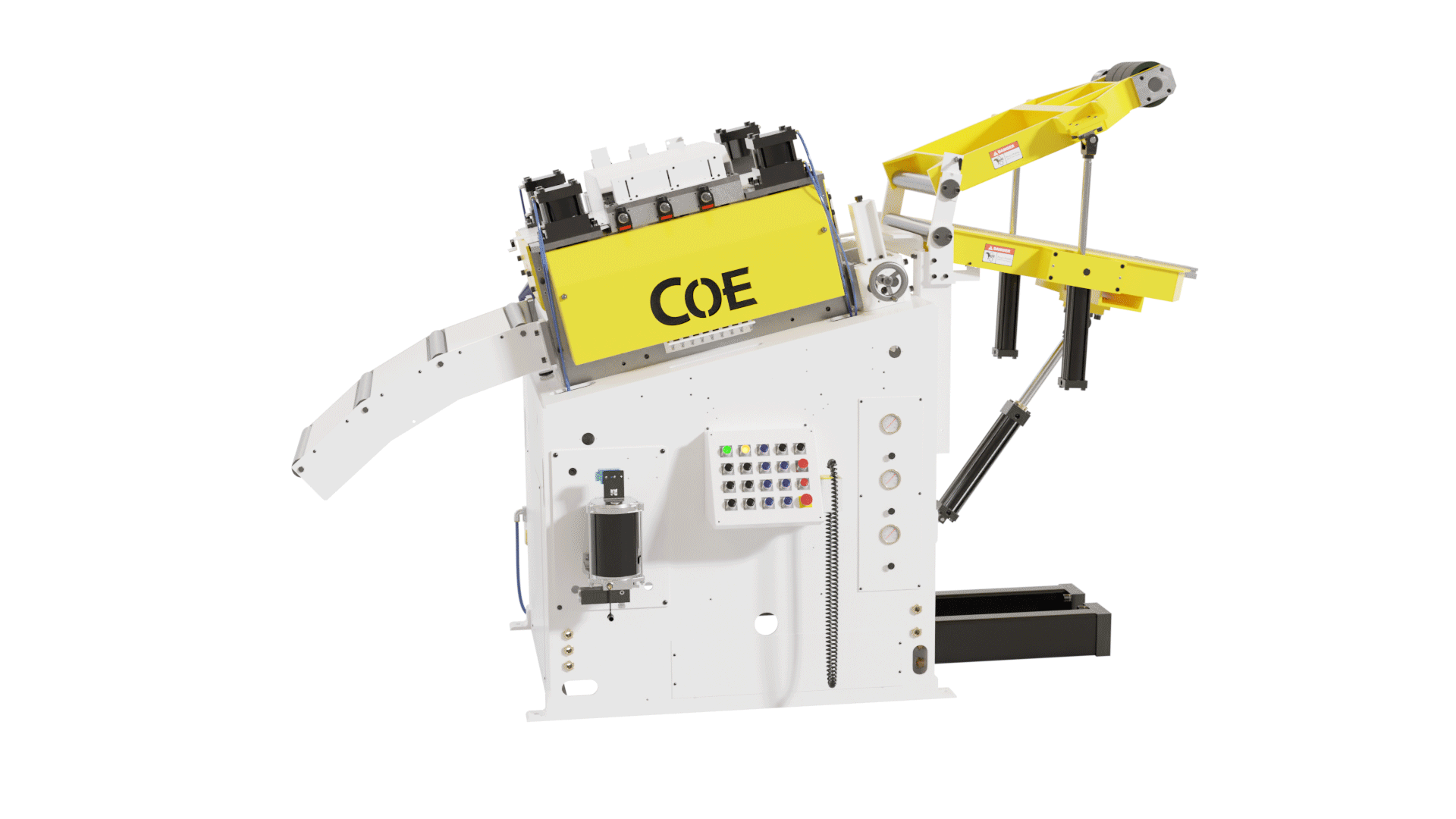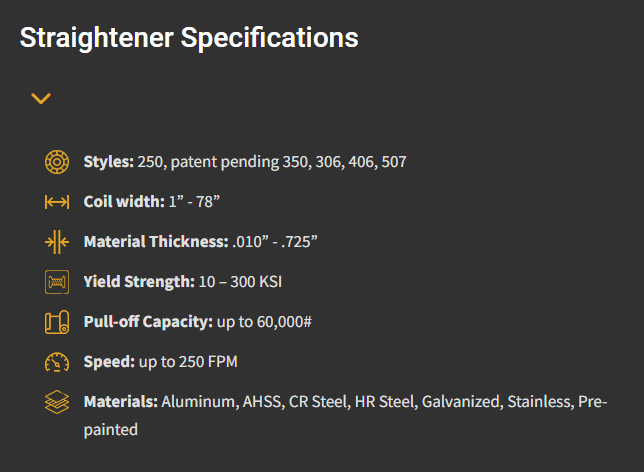In the intricate world of metal forming, straighteners play a crucial role, especially when handling high-yield materials. Unlike servo feeds that overlook material yield, modern straighteners precisely control material width, thickness, and line speed for optimal quality.
Understanding Modern Straighteners in Metal Forming
Straighteners prepare metal strips for further manufacturing. They ensure the metal’s surface is even and smooth, crucial for top-quality results. The evolution of straightener technology has been significant, driven by the need to manage tougher materials common in today’s industries.
Key Features of Modern Straighteners
Roll Diameter and Material Thickness
Straightener rolls’ diameter varies with material thickness, ranging from 1.00 inch to 8.00 inches. A straightener with a 5.00-inch roll might struggle with thinner materials due to inadequate roll center distances. Consequently, this highlights the importance of choosing the right diameter based on material specs to prevent defects like coil set in thinner materials.
Preventing Roll Deflection
Furthermore, handling wider materials increases the chance of roll deflection, which can lead to defects like edge waves. Modern straighteners include strong back-up rolls engineered to support the main rolls and prevent deflection. These systems are designed using advanced calculations that consider the material’s width, thickness, and yield strength for flawless operation.
Roll Center Distances
Optimally designed roll center distances are key for achieving the flattest metal possible. The right spacing significantly enhances the straightening process, with closer distances usually providing better results.
Jack Force and Custom Jack Design
A straightener’s performance also depends on the force from jacks that bend the coil through the rolls. Modern straighteners often have custom jacks that offer more force and allow tighter roll center distances, improving the process.
Horsepower Needs
The required horsepower for a straightener depends on a formula that considers line speed, the processed material, and the coil’s weight. This ensures the straightener has enough power for the expected workload without losing efficiency.
Considerations
In addition, straighteners must also consider the chain size for driving the rolls and the design of pinch rolls. Systems with more rolls, like those with 9 or 11, typically need more horsepower than simpler 7-roll systems. The use of outboard support plates may be required to prevent deflection at the end journals, avoiding gear wear and possible equipment failure.
Check out more COE Press Equipment videos
Integrating Straighteners with Line Feeding Systems
Modern straighteners do more than flatten metal. They are integral to line feeding systems and communicate directly with servo feeds. This integration lets the straightener adjust its operations based on feedback from the servo feed, optimizing speed and efficiency. These advancements not only improve operational smoothness but also extend the equipment’s lifespan by reducing stress.
Stay tuned for our next Science Behind the Solution blog.
Written by Tom Brockie, Sales.




